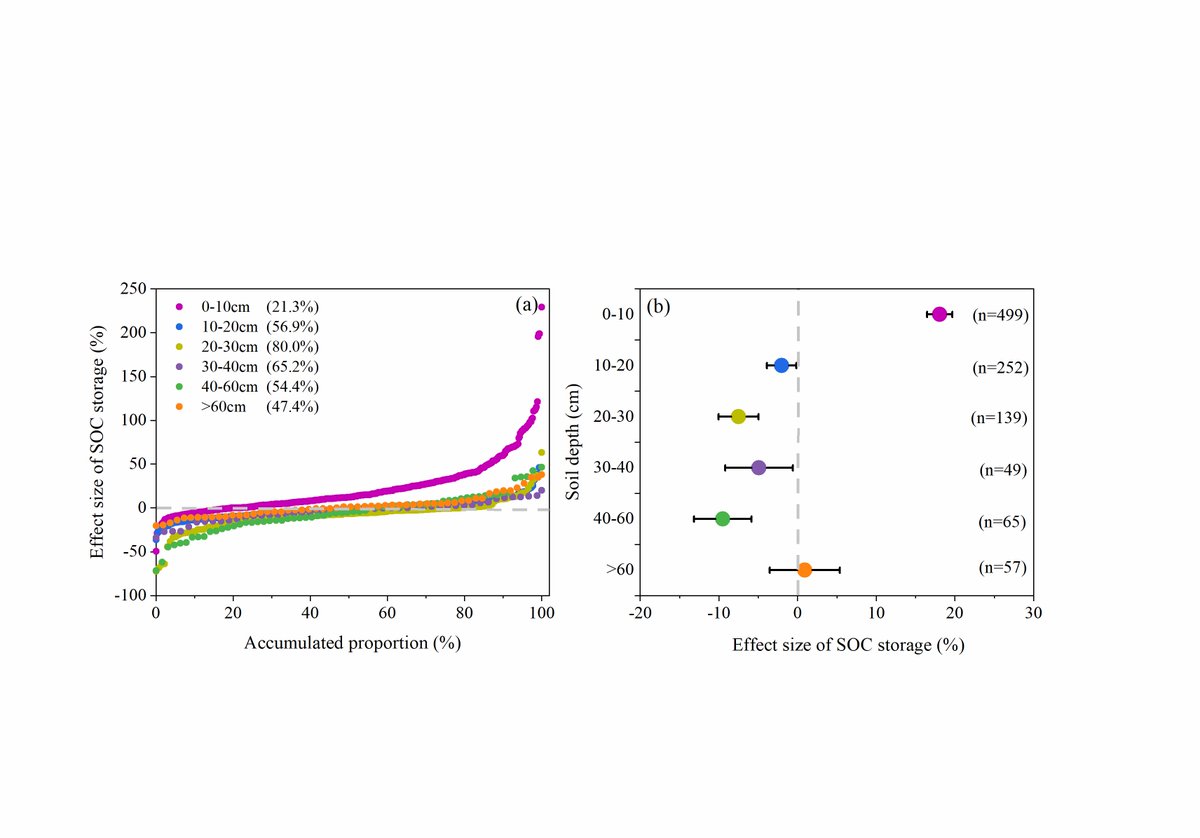
Adoption of no-till cultivation alone is good for #SoilHealth but does not sequester carbon. In this new paper in @Geoderma_Jrnl, Andong Cai compiled 1061 paired comparisons from 144 studies. (1/5)
authors.elsevier.com/c/1fNQX3p6oTxE…
authors.elsevier.com/c/1fNQX3p6oTxE…
There were large gains in the top 10 cm but these were more than offset by losses deeper in the soil profile. (2/5) 

Critically, the data was divided by time and the initial whole profile losses were slowly closed so that by 15 years there was no difference in soil carbon between tilled and no-till fields. (3/5) 

Another way of thinking about this is that a more “nature” distribution of soil carbon was achieved where carbon is concentrated in the top soil where it does the most good for soil health and crop nutrition. (3b/5)
After so many papers pointing this out the message still isn’t getting out to policy makers or carbon markets. (4/5)
A lot of the blame lies in recommendation to only account for the top 30 cm of soil and the fact that the most popular soil carbon model is only calibrated to the top 20 cm where there is a gain in carbon. (4b/5)
To summarize, no-till has many benefits and is a critical first step into regenerative agriculture but on its own the main climate benefit is reduced diesel fuel use. (5/5)
• • •
Missing some Tweet in this thread? You can try to
force a refresh



